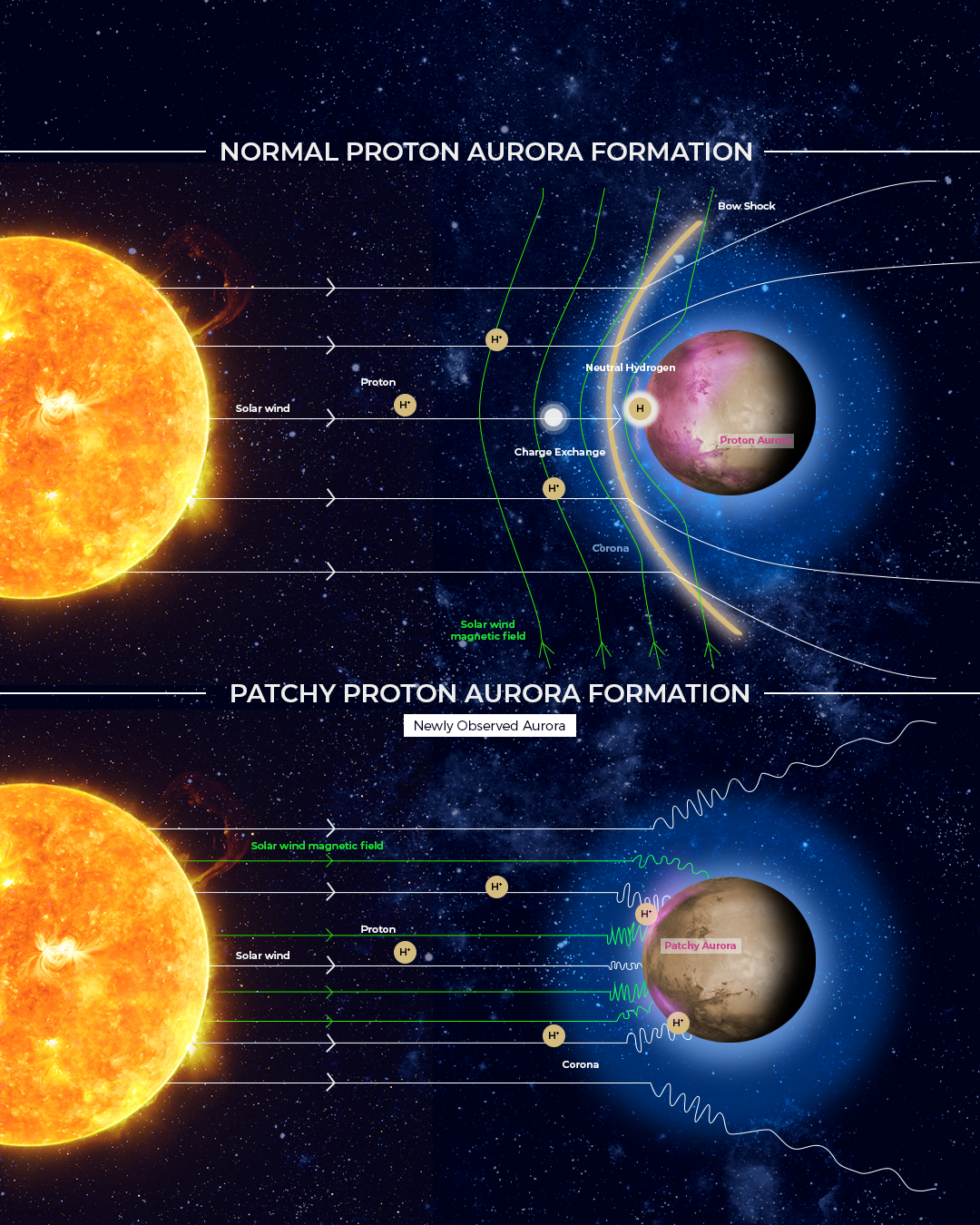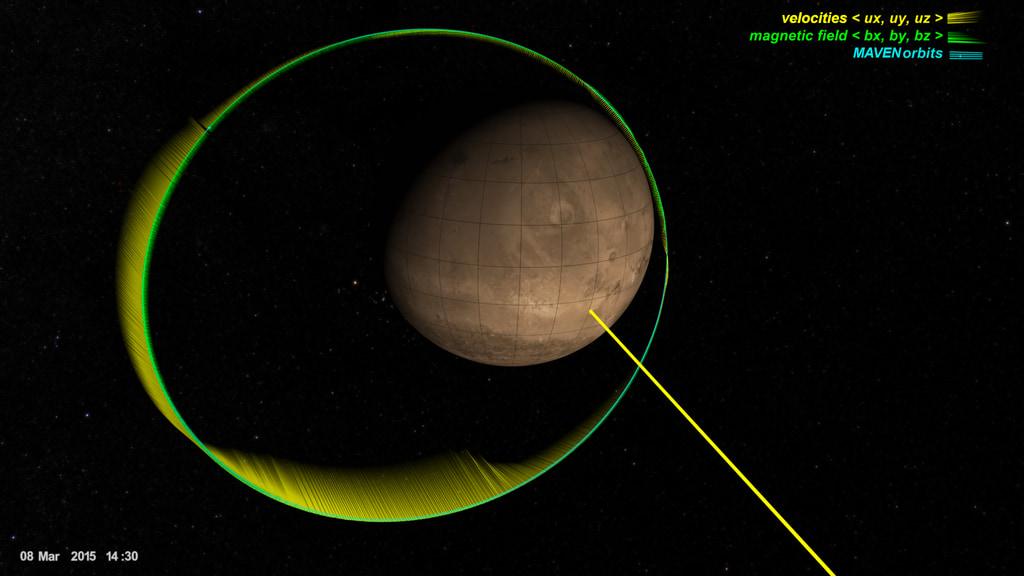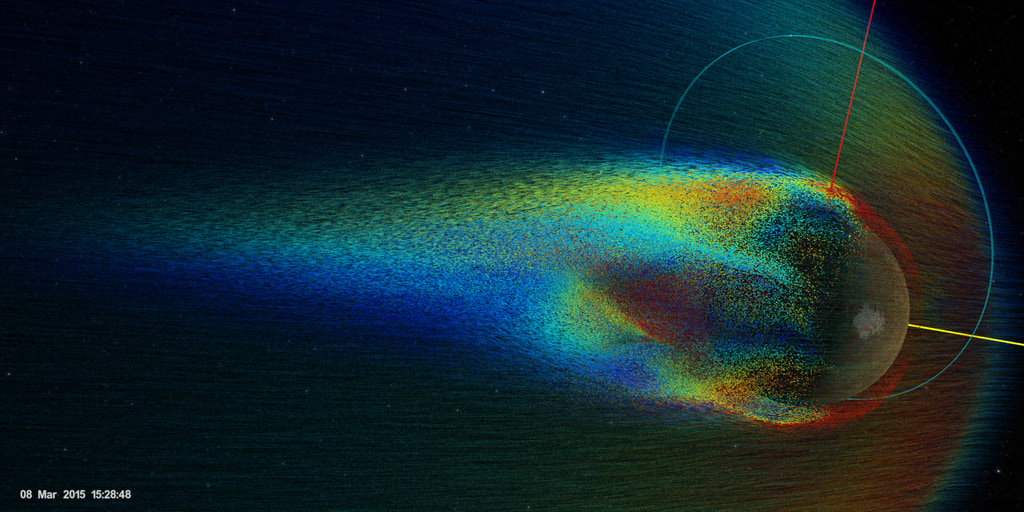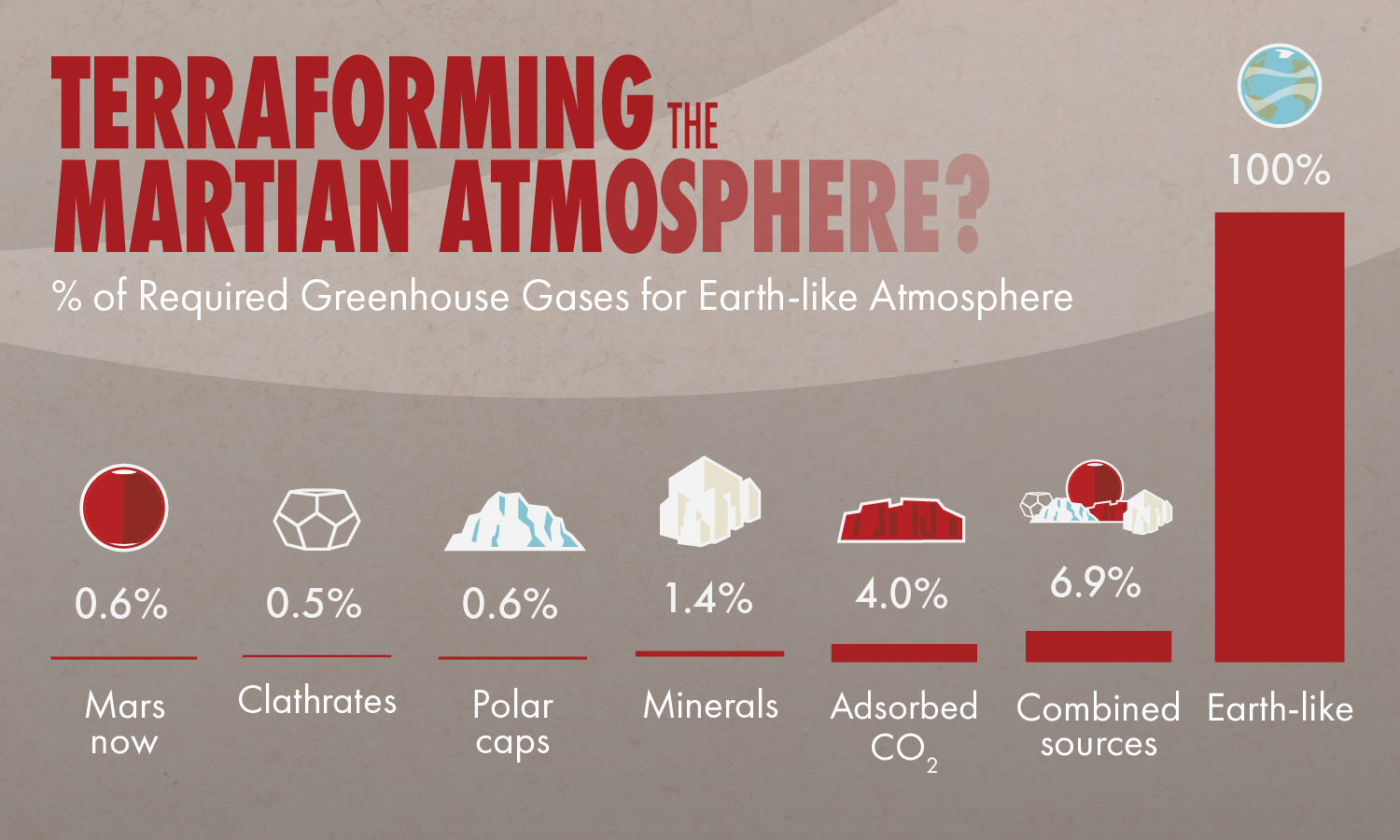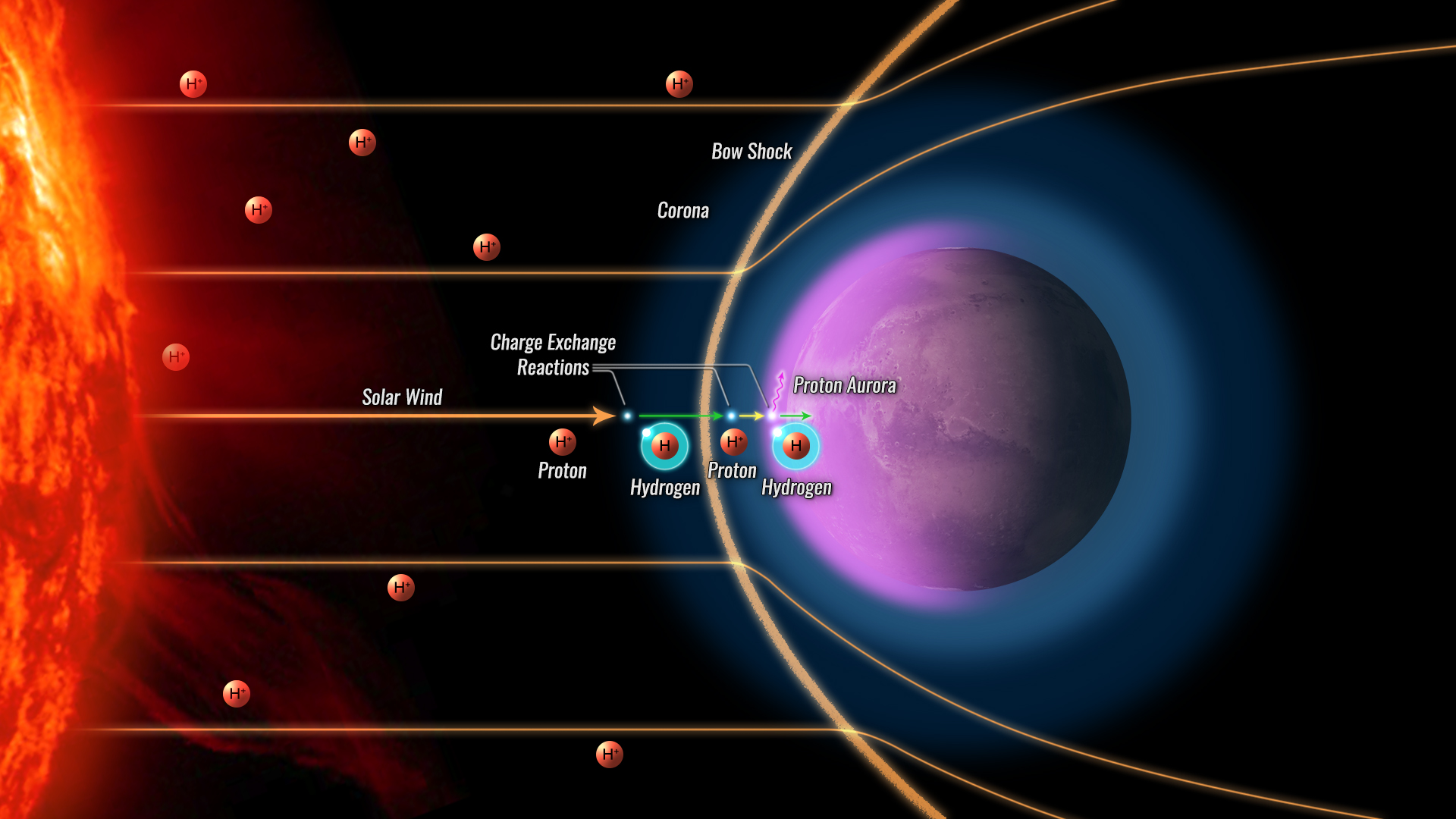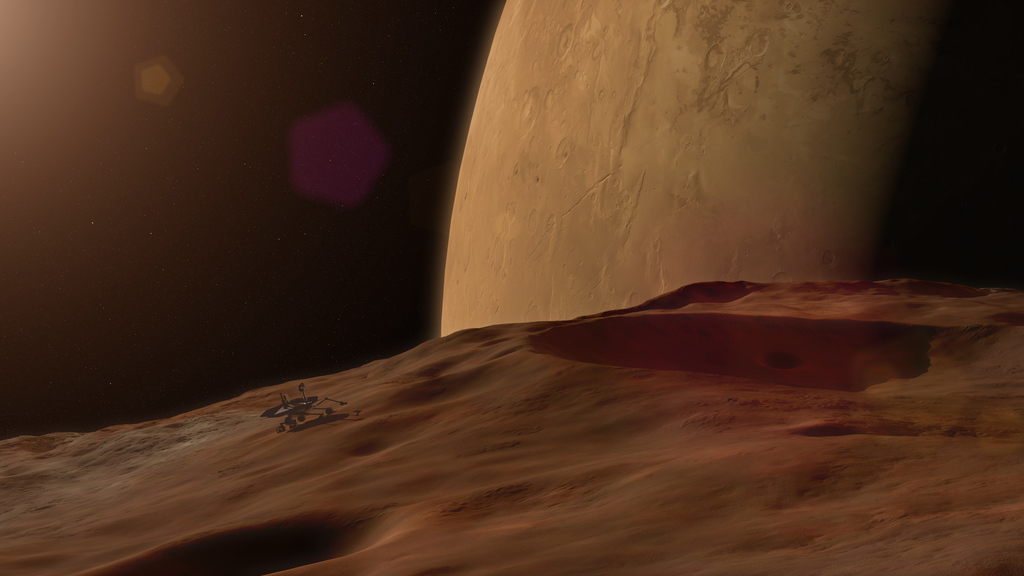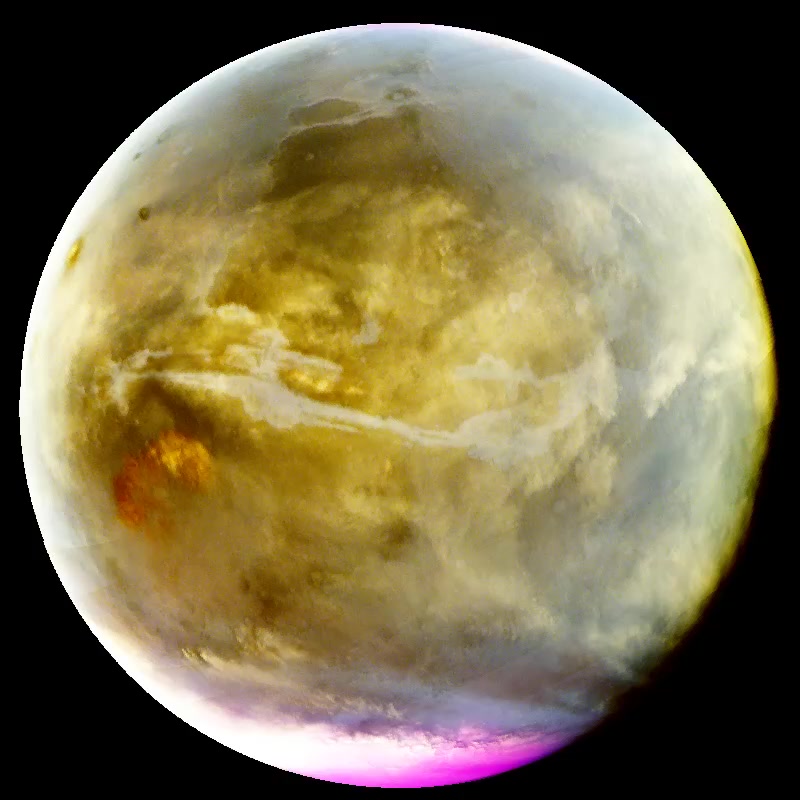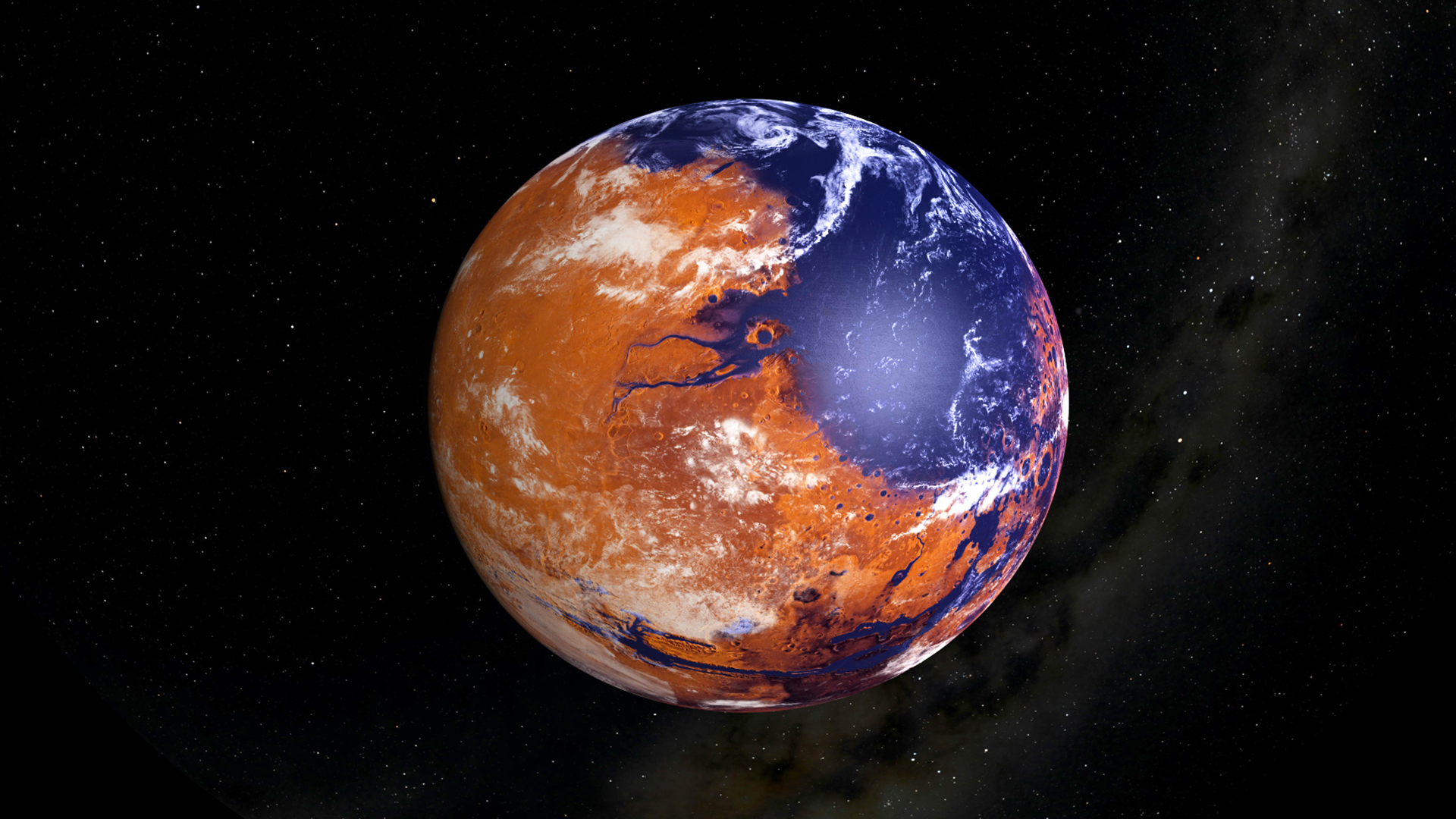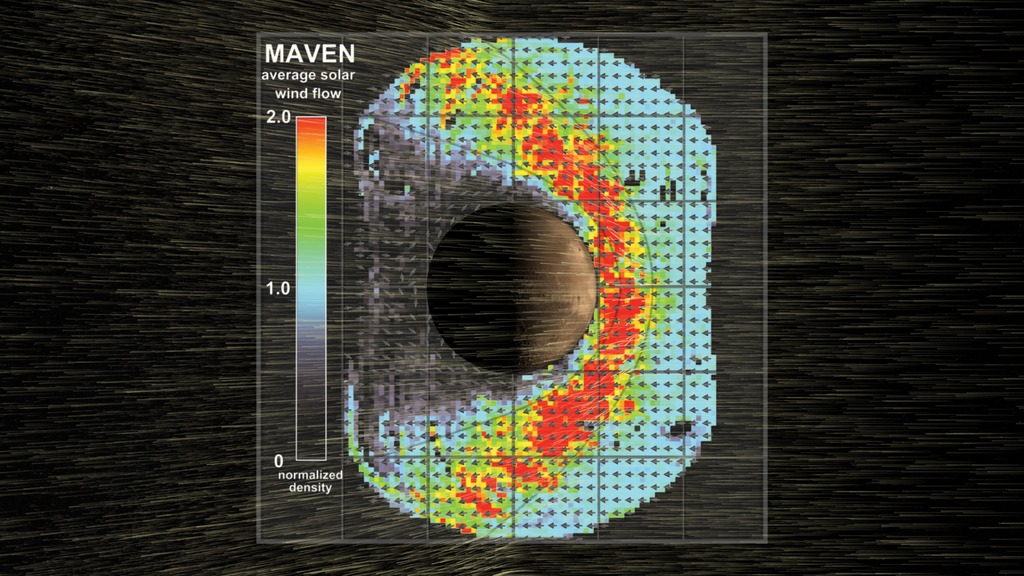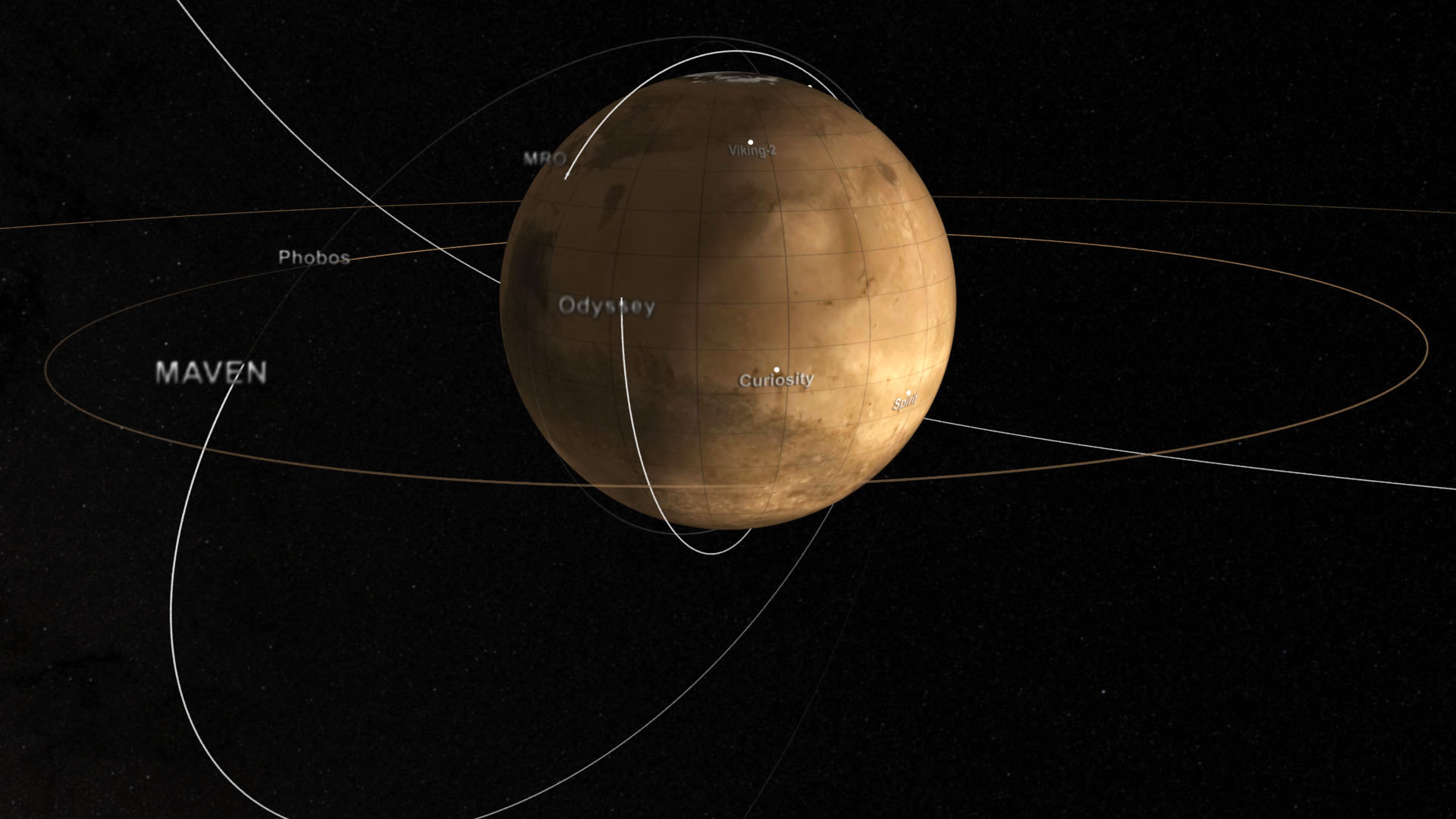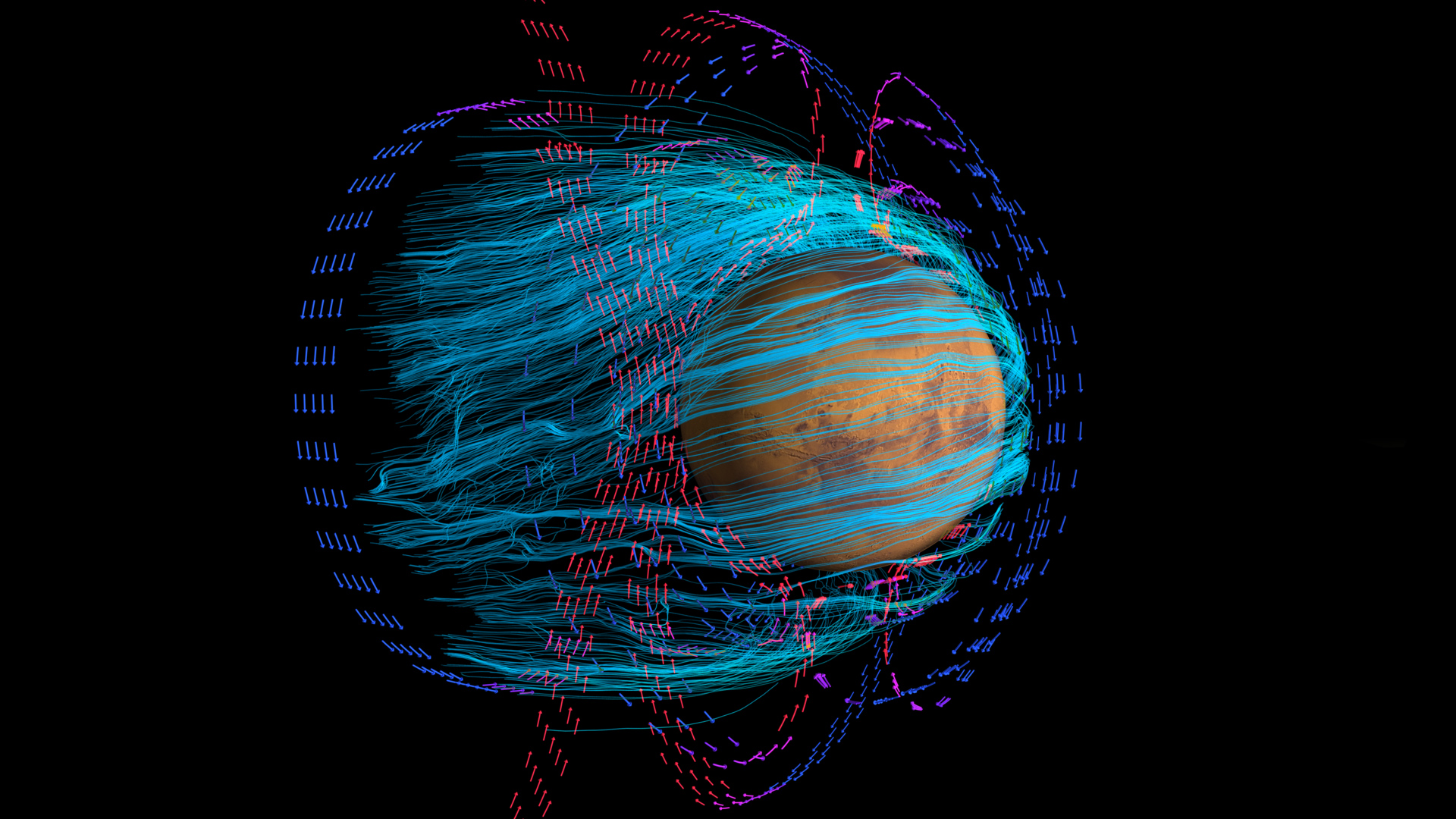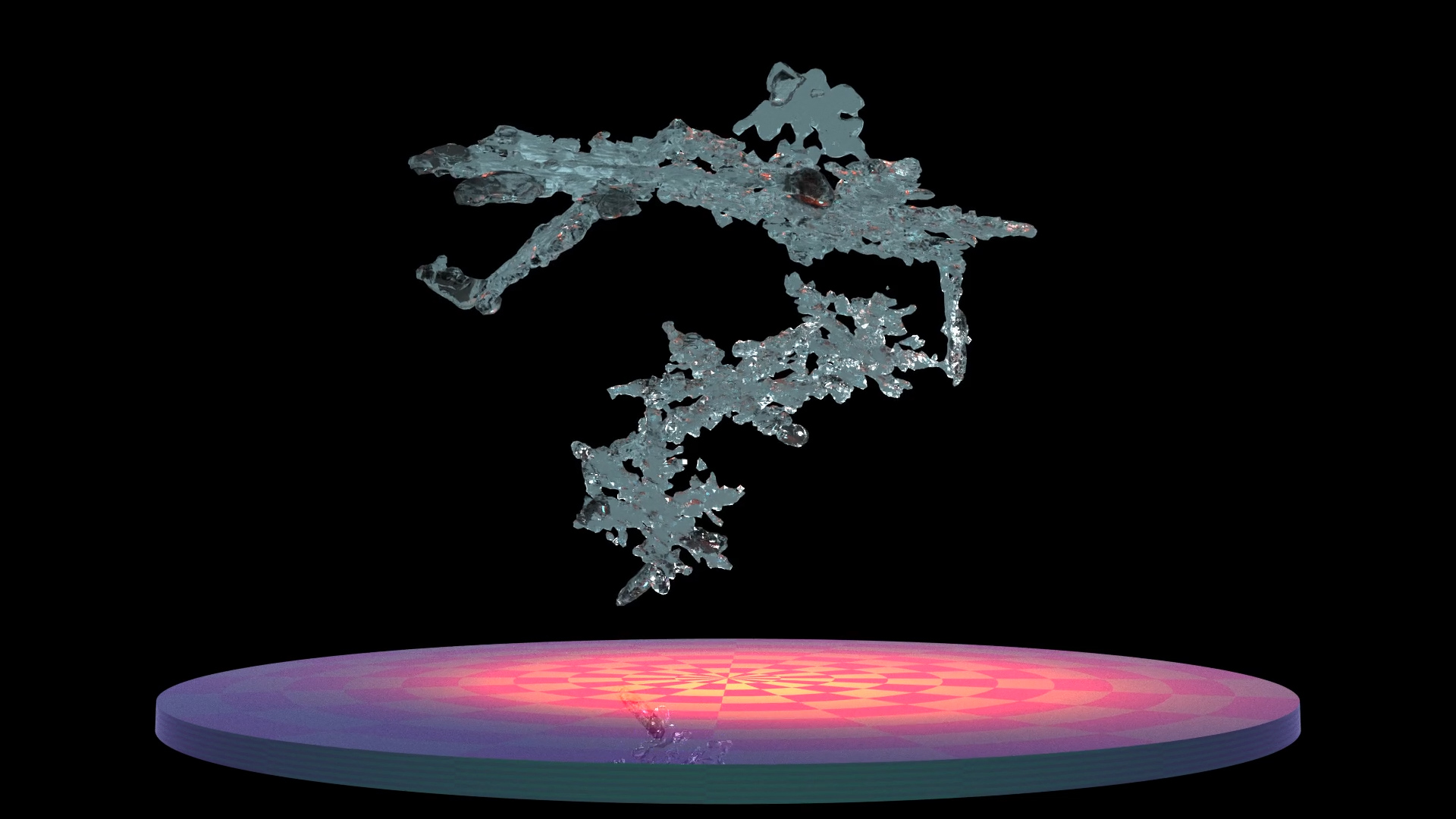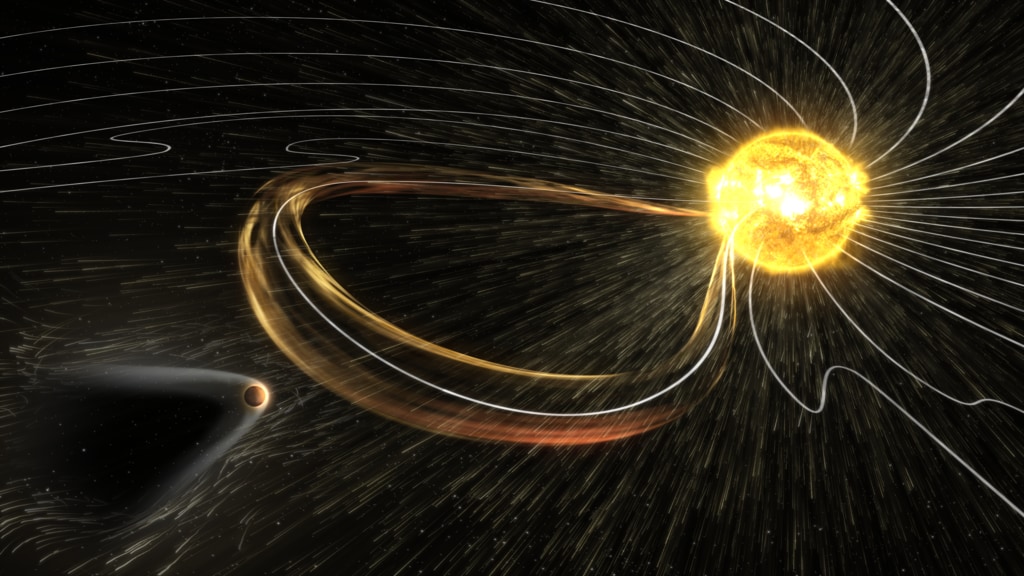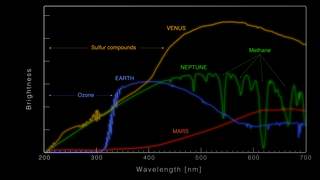Solar Wind Strips the Martian Atmosphere
Scientists have long suspected the solar wind of stripping the Martian upper atmosphere into space, turning Mars from a blue world to a red one. Now, NASA's MAVEN orbiter is observing this process in action, providing significant data on solar wind erosion at Mars.
Watch this video on the NASA Goddard YouTube channel.
Complete transcript available.
This video is also available on our YouTube channel.
Today, Mars is a global desert with an atmosphere far too thin to support bodies of flowing water, but evidence shows that Mars was considerably wetter in the ancient past. Scientists think that climate change on Mars was caused by the loss of an early, thick atmosphere, and NASA’s MAVEN mission is investigating whether it was driven into space.
One of the prime suspects is the solar wind, a stream of electrically charged particles continuously blowing outward from the Sun. Unlike Earth, Mars lacks a global magnetic field to deflect the incoming solar wind. Instead, charged particles from the Sun crash into the Mars upper atmosphere, and can accelerate Martian ions into space. Now, MAVEN has observed this process in action – by measuring the velocity of ions escaping from Mars.
The movies on this page compare simulations of ion escape with MAVEN’s observations of oxygen ion flux. The results closely fit the expected pattern, with the most energetic ions (in red) accelerated in a plume above Mars, while the majority of escaping ions (green) are lost along the “tail” region in the wake of the solar wind. MAVEN’s observations confirm that the solar wind is a significant contributor to atmosphere loss on Mars, and they bring scientists closer to solving the mystery of the ancient Martian climate. Read the full press release about this finding.
The solar wind accelerates ions from the Mars upper atmosphere into space.
Watch this video on the NASAexplorer YouTube channel.
Movie without music and titles. Available for download in up to 4k resolution.

The solar wind interacts with the Mars upper atmosphere, but is deflected past Earth by a global magnetic field (artist's concept).
Credit: NASA/GSFC

A solar storm approaches Mars (artist's concept). The Red Planet is thought to have lost much of its atmosphere to such extreme space weather.
Credit: NASA/GSFC

Artist’s rendition of a solar storm hitting Mars and stripping ions from the upper atmosphere.
Credit: NASA/GSFC

During a solar storm (right), Mars experiences a dramatic increase in atmosphere loss, compared with normal solar wind conditions (left). Artist's concept.
Credit: NASA/GSFC

Print resolution still of MAVEN observed O+ ion flux chart (with Mars)

Print resolution still of MAVEN observed O+ ion flux chart (without Mars)
Solar wind (moving from right to left) hitting Mars' induced magnetic field (in blue)
Solar wind (moving from left to right) hitting Mars' induced magnetic field (in blue)
For More Information
See NASA.gov
Credits
Please give credit for this item to:
NASA's Scientific Visualization Studio and the MAVEN Science Team
-
Visualizers
- Greg Shirah (NASA/GSFC)
- Horace Mitchell (NASA/GSFC)
- Ernie Wright (USRA)
-
Producer
- Dan Gallagher (KBR Wyle Services, LLC)
-
Editor
- Dan Gallagher (USRA)
-
Scientists
- Bruce Jakosky (LASP)
- David Brain (University of Colorado Boulder)
- Jasper Halekas (University of Iowa)
- Yingjuan Ma (UCLA)
- Xiaohua Fang (LASP)
- Yaxue Dong (LASP)
-
Narrator
- Joy Ng (USRA)
-
Animators
- Brian Monroe (USRA)
- Michael Lentz (USRA)
Missions
This page is related to the following missions:Series
This page can be found in the following series:Datasets used
-
[MGS: MOC]
ID: 58 -
BATS-R-US Magnetosphere Model
ID: 686MHD Magnetospheric simulation
See all pages that use this dataset -
Ion Flux [MAVEN: STATIC]
ID: 895 -
Mars Monte Carlo Pickup Ion Transport (MCPIT) Model
ID: 896
Note: While we identify the data sets used on this page, we do not store any further details, nor the data sets themselves on our site.
Release date
This page was originally published on Thursday, November 5, 2015.
This page was last updated on Sunday, January 5, 2025 at 10:49 PM EST.
![During its first decade at Mars, MAVEN has helped to explain how the Red Planet evolved from warm and wet into the cold, dry world we see today. Complete transcript available.Universal Production Music: “Executive Deceit” by Samuel Karl Bohn [PRS], Chalk Music [PRS]; “Quasar” by Ross Stephen Gilmartin [PRS], Chappell Recorded Music Library Ltd [PRS]; “Modular Odyssey” and “Synthology” by Laetitia Frenod [SACEM], Koka Media [SACEM]Watch this video on the NASA Goddard YouTube channel.](/vis/a010000/a014600/a014690/MAVEN-10th-Anniversary-Preview.jpg)
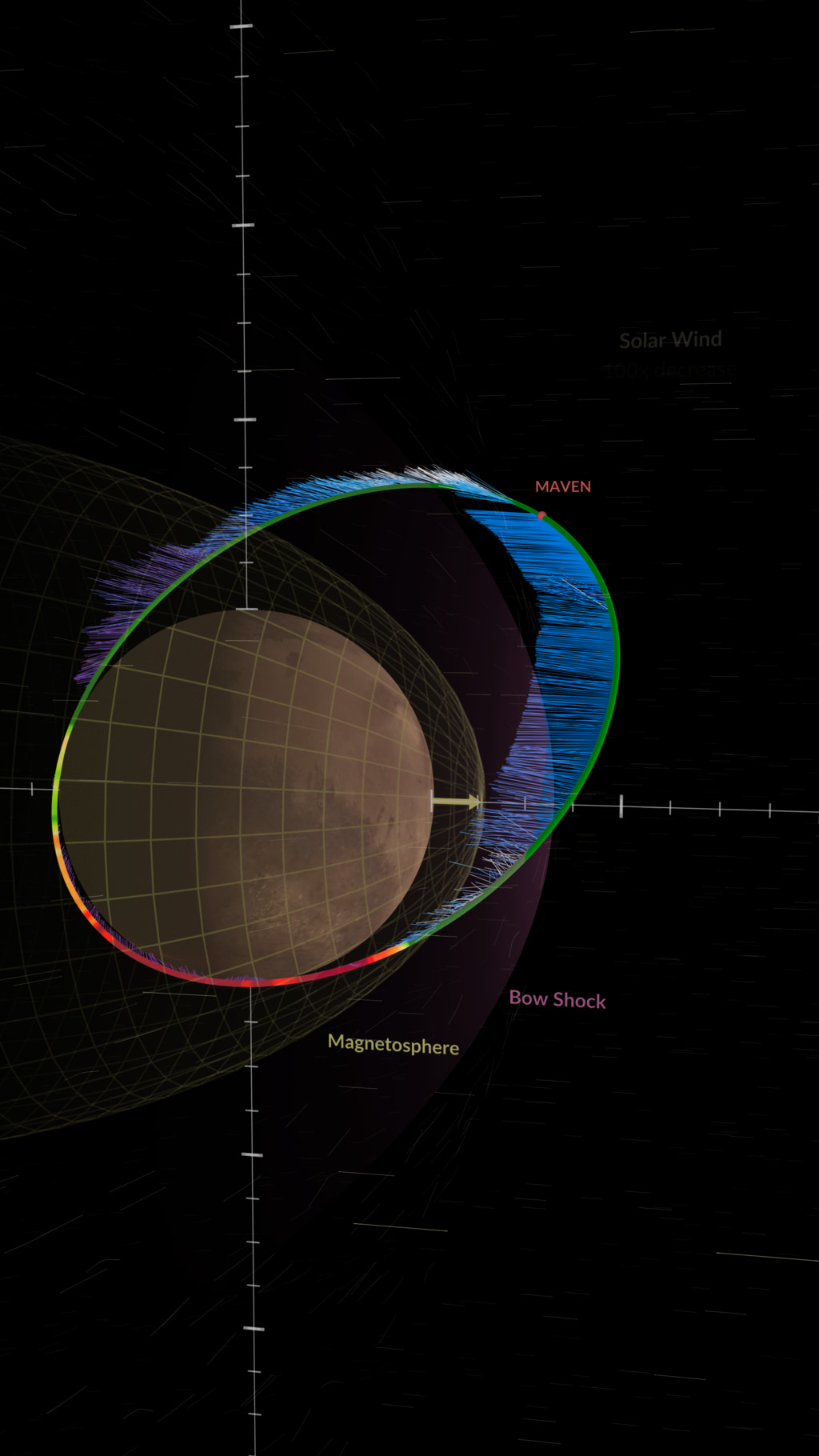
![Learn about the “disappearance” of the solar wind at Mars that was witnessed by MAVEN – an event last seen nearly a quarter-century ago at Earth.Complete transcript available.Universal Production Music: “Space Museum” by Harry Gregson Williams [BMI], Atmosphere Music Ltd. [PRS]; “Currents and Crime Scenes” by Dylan Matthew Love and Harry Gregson Williams [BMI], Atmosphere Music Ltd. [PRS]Watch this video on the NASA Goddard YouTube channel.](/vis/a010000/a014400/a014477/MAVEN_Solar_Wind_Disappear_V4.jpg)
